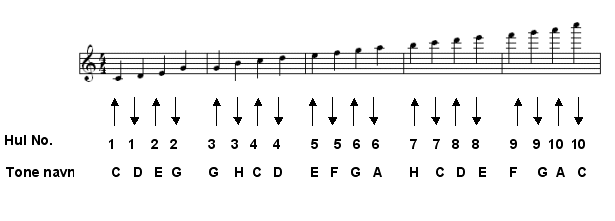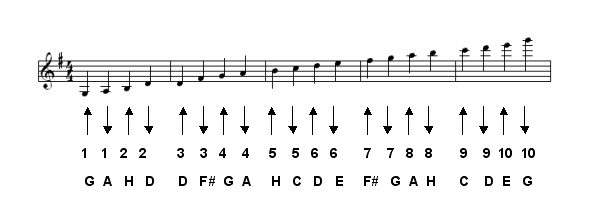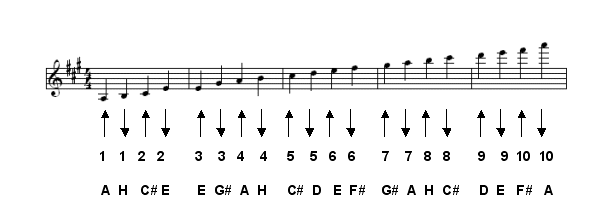Scales
The big advantage of the blues harp is, that it is so easy to play, that you can get far without even having to go to classes
These are some scales so you can learn for learning notes for hte harp. Different harps have different notes.
Upward arrow means blow
Downward arrow means such or draw.
Nearly all blues harps has 10 wholes and the notes are arranged as shown.
Note that sucking in whole 2 gives the same note as blowing in whole 3. This is in order to get the right chords into the harp.
The harp is made in a way that you always get a nice chord when you are sucking or blowing. Shen you are blowing you get the root chord.
When you are cuking you get differnt chords depending on wher you are drawing, but it is important that you get the dominant chord since this is the root chord when you are playing cross harp.
(Click on the picture for hearing
C-harp 
Læg mærke til at tonen F og A mangler i bassen (4. og 6. tone på blues-harpen), samt at kvinten G ligger på både blæs og sug og at tonen H (den øverste ledetone på blues harpen) mangler for oven. Munharpen er lavet sådan for at give en C-akkord når man blæser, og så fordi at man ikke kan lave 3 oktaver med 10 huller, så må man jo springe nogle over.
Det at tonerne er lagt ud som de er, gør at det er nemt at spille i de forskellige oktaver, for tonerne ligger ens. Det gør også at man altid får grundtonens akkord (Tonikaen) når man blæser). Dobbleringen af kvinten i bassen gør at man kan spille blues, for når man spiller "crossharp" er grundtonen netop kvinten, og man ønsker netop denne akkords grundtone på "sug".
G-harp

D-Harp

A-Harp
